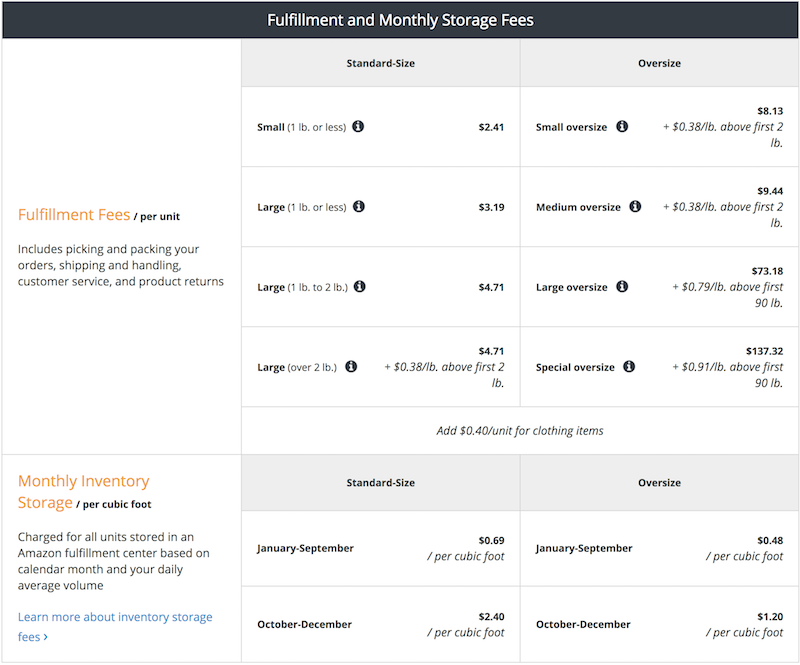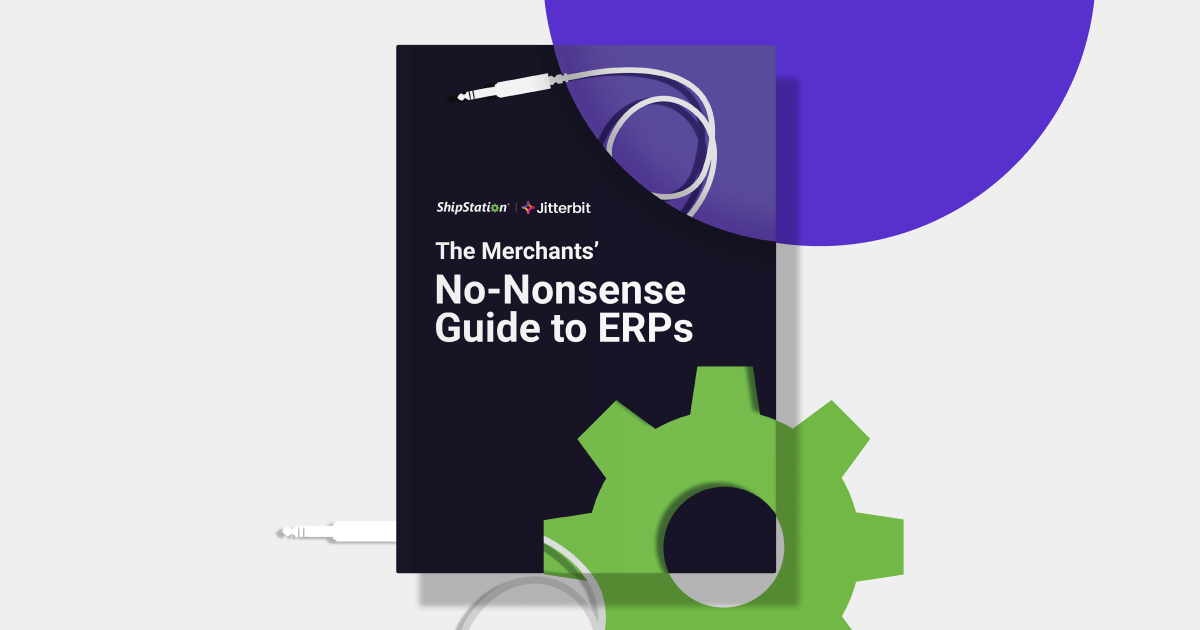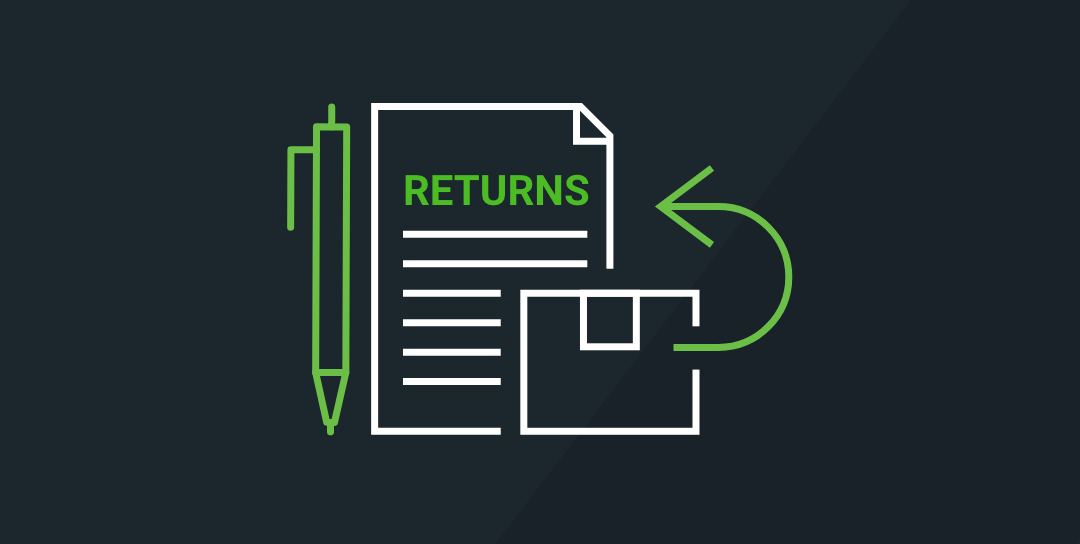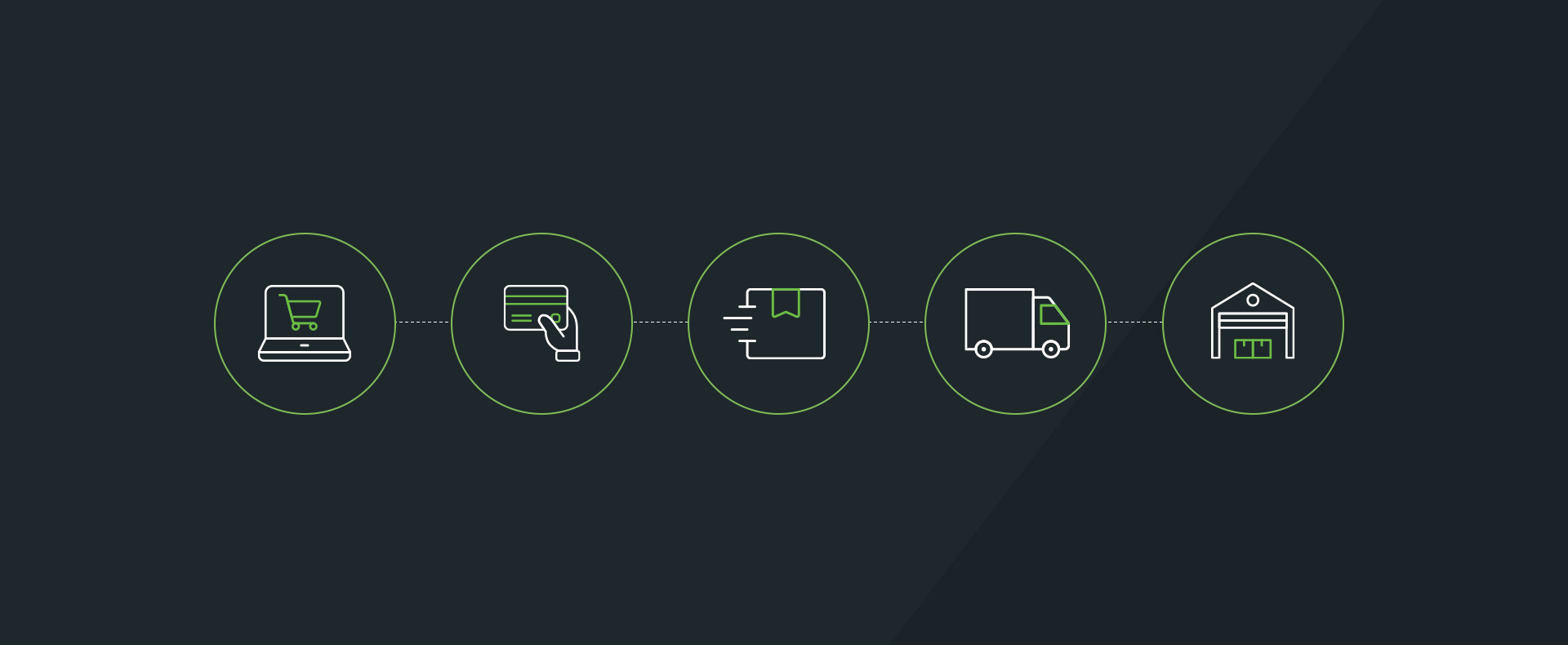3 Pros and Cons of Seller Fulfilled Prime (SFP)
In an earlier post, “Have You Considered Seller Fulfilled Amazon Prime?”, we provided an overview of two Prime programs: Fulfillment by Amazon (FBA) and Seller Fulfilled Prime (SFP).
In this article, we’ll be focusing on the advantages and disadvantages of the latter. Between financial considerations, inventory control, and the expectations of Amazon, we’ll help you navigate your best option.
We’ll also have the pleasure of once more hearing from Marc Berman, Office Manager of ShipStation customer Art of Words.
Read on to see which if your company is a good candidate for seller fulfilled prime vs Amazon fulfilled.
What Are the Advantages of Seller Fulfilled Prime?
1. You’ll Avoid FBA Fees.
Below is the chart for FBA Fulfillment and Monthly Storage Fees. Fulfillment includes picking, packing, shipping, customer service, and returns.

(Source)
As you can see, larger and heavier items have a higher fulfillment fee. Additionally, storage fees vary depending on the time of year. For example, it gets more expensive during the holidays since it’s the busiest shopping season for Amazon.
These fees could be the main factor that determines whether FBA or SFP is more profitable for you. “Our products are light, but we send the prints in two-foot-long tube packaging,” says Berman. “Amazon counts anything with a dimension over 18 inches as a large package. So the fees we would have to pay under FBA are more expensive than SFP. We save around 25% by selling under SFP.”
Pro Tip: Use the Fulfillment by Amazon Revenue Calculator to estimate your potential profit margin.
Additional Fees
The chart above shows two main FBA fees, but there are several other fees to consier with Amazon. For example, under both FBA and SFP, sellers must pay referral fees which average 15% of a product’s selling price.
In general, Amazon does not charge a fee to process returns. However, there are certain product categories that are eligible for free customer returns. In those cases, the seller pays a return processing fee equal to the original fulfillment fee.
Additionally, Amazon charges a long-term storage fee if your stock sits in an Amazon warehouse for six months or longer. And if you want to remove inventory from Amazon or dispose of unsold stock, you’ll have to pay an order removal fee.
This can make it difficult for sellers looking to sell higher-priced items at a lower pace than other sellers. It is also a deal-breaker to do FBA if your pricing is too inflexible to move product faster.
2. You’ll Have Greater Inventory Control.
With Seller Fulfilled Prime, you have complete control over your stock and can keep everything in one central location. Having total control over your inventory reduces any lag time from your product having to be shipped to Amazon to restock. This means you’ll be less likely to run out of stock right before Black Friday — a nightmare for every company.
Having flexibility and control over inventory is a huge advantage for Art of Words. “We’re able to print on demand and send out items in a couple of minutes. We would never have this option with FBA since we have to send all our stock to the designated warehouses in advance,” says Berman.
Another benefit to controlling your stock so thoroughly is that you have more options on your fulfillment. You can outsource to fulfillment centers, giving you more choice than just going with Amazon, or even drop shipping with SFP.
3. You Can Track Packages in ShipStation.
As FBA is all about Amazon taking the reins, you get reduced access to your customers. This can result some annoyances, with Amazon being the one to correct issues regarding an order. The real downside is not being able to track orders through ShipStation as Amazon assumes the responsibility.
“Because SFP gives us the option to track packages, we’re able to use ShipStation to track and tag Amazon Prime orders. And we can see which stage in the delivery process each order is in,” explains Berman.
“If a delivery is taking longer than expected, we can reach out to customers immediately and notify them their order might take longer to arrive than expected. If we sold under FBA, we wouldn’t have this option since we wouldn’t be able to track packages and communicate with customers.”
What Are the Disadvantages of Seller Fulfilled Prime?
1. You’ll Pay Higher Shipping Rates.
Sellers face two main challenges when using SFP:
- They have to pay for shipping.
- They have to deliver Prime orders within two days.
The shipping fees alone can be a profit killer. Consequently, some companies have to quit selling under SFP because it results in negative profits. These added stresses are difficult to overcome for those that have a smaller profit margin on their product.
Despite these expenses, Art of Words remains successful under SFP. “We know having to meet the two-day shipping requirement will result in lower profit margins,” says Berman. “While we’ve never had negative profits, sometimes there are orders where we break even. But because we’re selling on Prime, we have so many orders it makes up for the shipping costs.”
Berman provided insight on how the company manages shipping costs:
“To lower shipping costs, we reached out to our UPS representative and explained to him we need to get shipments out in two days since we sell under Prime. He was able to help us get a better rate. Hopefully, we’ll be able to get another discount in October in time for the holiday season.
ShipStation has also been really helpful for shipping because it allows us to plug in our own UPS discounted shipping rates. It also lets us compare our delivery options to make sure get our orders are delivered on time.”
2. You’ll Have to Abide by Strict Requirements.
Seller Fulfilled Prime requires a 98.5% on-time shipment rating and an order cancellation rate that doesn’t exceed 1.5%. Vendors must supply the tracking information to Amazon so companies can monitor if vendors are meeting these standards.
If you fail to meet the standards, it could take up to 30 days to regain Prime status. Some companies fail to consistently meet these requirements. “Whether you can handle SFP depends on your ability to continuously ship orders and have them arrive on time without errors,” advises Berman.
Luckily, there are a few ways to make sure you always meet these requirements. First, you can use the “Ship by Region” feature. This allows you to flag items as Prime-eligible only to customers whose registered shipping address is in close proximity to you. This may reduce sales, but it can help meet shipping deadlines and reduce shipping costs.
Art of Words will turn off the Prime badge on all products when the team is going on vacation or needs to be out of the office for a day. This automatically changes your listings to the default shipping settings until you turn Prime back on.
3. You’ll Be Solely Responsible for Warehousing and Fulfillment.
With FBA, once you send your stock to the assigned warehouses and pay your FBA fees, Amazon takes care of everything from there. It’s Amazon’s obligation to get shipments out on time and to choose which warehouse to send your stock to. In that sense, FBA is a low maintenance option.
With SFB, even when you’ve done everything right, problems can arise and you’re ultimately responsible for them. Mistakes can happen, issues with couriers, and other things out of your control can occur and you’ll need to prepare for these issues.
If you’re an SFP seller, you have to figure out where and how many warehouses you want and can afford. You also have to come up with an efficient packaging and shipping system that works for your company and can meet Prime standards. This includes deciding a cut-off time for two-day shipping Prime orders.
Art of Words has been strategic with this decision. “Our cut-off time for all orders is 2 p.m. so we have enough time to pack and ship orders,” says Berman. “If a customer places an order after 2 p.m., then the 2-day shipping deadline doesn’t start until the next day. This allows us to pay for three-day shipping sometimes, saving us around $5 to $10.”
Which Program Should You Choose?
Deciding if you should sign up for Fulfillment by Amazon or Seller Fulfilled Prime depends on your company’s products, Amazon’s fees, and how much work you are willing to do.
Here’s Berman’s take:
“If you’re selling items that qualify as a small package and don’t require any special packaging, FBA is probably better for you. If you’re selling items that count as large packages or requires packaging FBA may not offer, then SFP may be more cost-effective.
“Compare the cost and time involved for each program. Remember, if you’re interested in becoming an SFP seller, you have to make sure you can do it round the clock without error. A very low margin of error is accepted, so you can’t mess up.”






